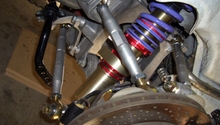Porsche 993: How to Jack Up Your Porsche
If you think jacking up your Porsche 993 is child's play, think again. Here's how to safely do it.
This article applies to the Porsche 993 (1993-1998).
Jacking up your Porsche 993 is a scary proposition for a first timer. There is a bit of controversy surrounding the proper jack points and jacking method. The last thing you want to do is cause serious damage when the point is to perform proper maintenance or to get in there and fix something. Before even starting such a job, make sure you have a high-quality hydraulic floor jack and jack stands. Don't settle for a low quality piece of equipment to work on such a high quality automobile. Don't sacrifice your safety for a few bucks. For whatever reason you have decided to jack your car up and do your own wrenching, you are saving plenty over having a professional do the job, so don't skimp where your safety is concerned. Read on to learn of one method that has been used safely by many Porsche owners and will get the job done.

Materials Needed
- Hydraulic floor jack (flat top)
- Jack stands (flat top; at least two, four if needed)
- Wheel chocks (if only using two jack stands)
- Four 2x6x24 inch boards
- Five hockey pucks
Step 1 – Drive up on two wood planks
Set a couple of 2x6x24" boards on the garage floor. It may be easier if the leading edge of the plank is beveled. It also helps to use a carpet remnant or an anti-skid strip on the underside of the plank to prevent it from pushing and sliding when the front wheels hit it. Make sure that once you get up on the plank, you continue with your forward motion until you get all the way to the other end of the plank without driving back down the other side (when you jack up the rear, the front wheels will get pulled backward, and you don't want to come off the plank). You need the wood planks to get the jack under the car to hit the jack points, even if the car is not lowered.
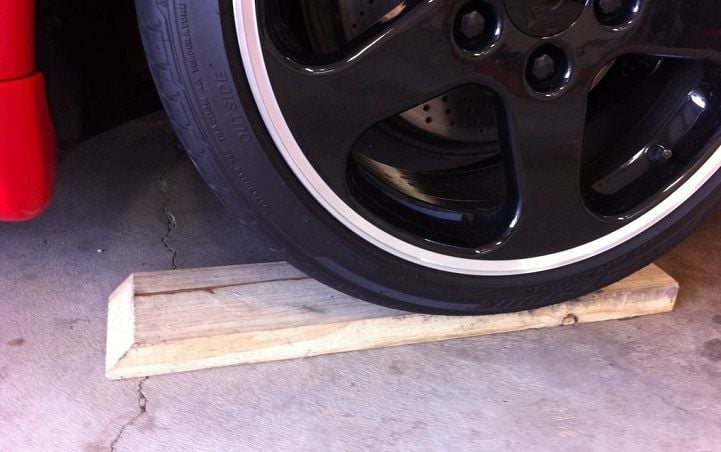
Step 2 – Jack up under the engine
Porsche lists the proper jack point as under the engine. As odd as it may sound, a hockey puck on top of the jack pad works perfectly well with the jacking point. It is small enough to fit on the point and disburse the weight. Some have screwed a bolt through the puck, leaving the head out slightly, which fits right into the hole in the jack point under the engine. This helps keep the car from sliding off the jack pad and hockey puck. The jacking point is under the engine at the oil drain plug location. If you have an engine tray, remove it first. Most Porsche owners feel the engine tray is worthless and can be permanently removed anyway.
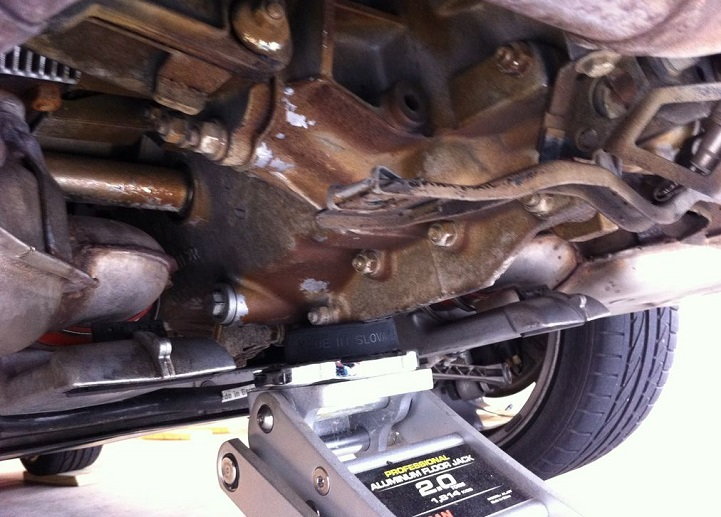
Step 3 – Rest the rear end on jack stands
Jack the car up at the jack point high enough to get the jack stands under the rear stand locations in the front of the rear wheels. As an optional step, additional hockey pucks (one per stand) can be placed on each of the flat pads on the jack stands. This allows a nice fit and gives added clearance for removing the trays or any other work you may be doing under the vehicle.

Step 4 – Jack up the front end
Before you can jack up the front end, remove the two rubber drain plugs from under the front bumper. Place a 2x6x24" plank on the hydraulic jack pad. Slide the jack under the pan behind the front bumper. The plank helps disburse the weight across the entire pan.
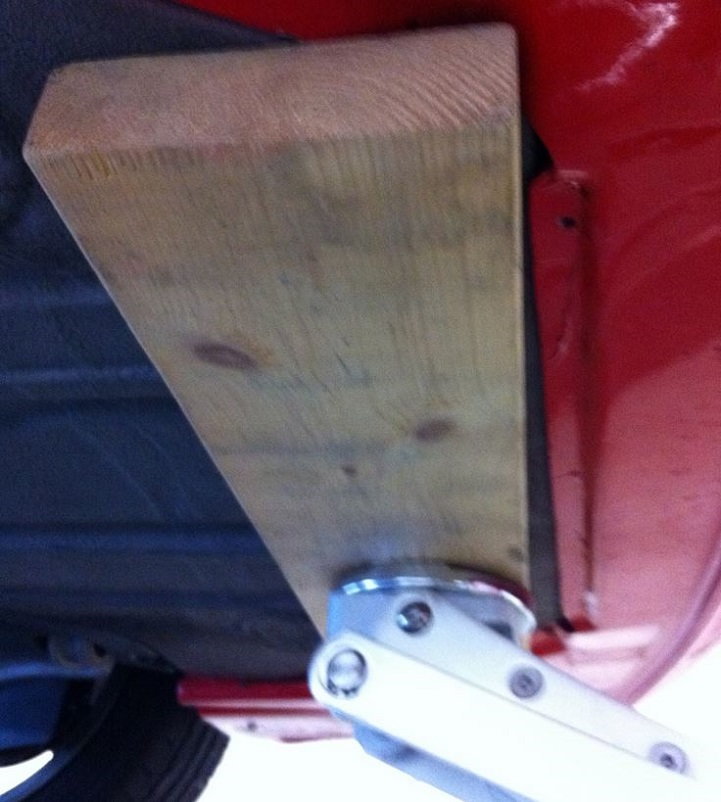
Step 5 – Place jack stands under the front
Once the front is raised high enough, place flat top jack stands (again with hockey pucks) on the pad and place under the stand locations behind the front wheels. Once in place, slowly lower the car onto the front stands.
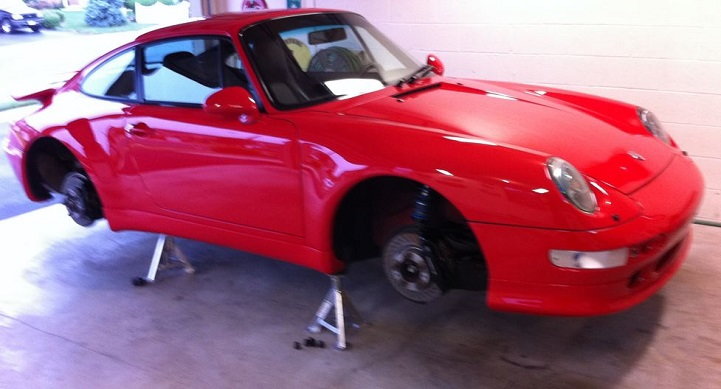
Related Discussions and Sites
- How to Jack Up a 993 - Rennlist.com
- How to Jack Up a P Car - Rennlist.com
- Jacking Up a 993 - Fell Off Jackstand! - Rennlist.com
- How to Jack the Car Up - PelicanParts.com
- 993 Jacking Points and Jack Stand Locations - PelicanParts.com




